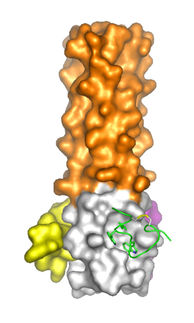Cytokinetics Announces the Initiation of a Phase I Clinical Trial for GSK-923295
Advertisement
Cytokinetics, Incorporated announced that GlaxoSmithKline (GSK) has initiated a first-time-in-humans Phase I clinical trial of GSK-923295 in patients with solid tumors. GSK-923295 is a small-molecule inhibitor of centromere-associated protein E (CENP-E). As reported at the 2007 Annual Meeting of the American Association for Cancer Research (AACR), GSK-923295 demonstrated a broad spectrum of activity against a range of human tumor xenografts grown in nude mice, including models of colon, breast, ovarian, lung and other tumors. The initiation of this clinical trial triggers a milestone payment of $1 million from GSK to Cytokinetics under the terms of the companies' strategic alliance established in June 2001.
This Phase I clinical trial is an open-label, non-randomized, dose-finding trial designed to investigate the safety, tolerability, pharmacokinetic and pharmacodynamic profile of GSK-923295 in patients with advanced solid tumors. GSK-923295 is the third novel drug candidate to arise from Cytokinetics' broad strategic alliance with GSK.
CENP-E plays an essential role in chromosome movement during early mitosis and integrates mitotic spindle mechanics with regulators of the mitotic checkpoint, hence CENP-E is directly involved in coupling the mechanics of mitosis with the mitotic checkpoint signaling machinery, regulating cell-cycle transition from metaphase to anaphase. CENP-E is also essential for prometaphase chromosome movements that contribute to metaphase chromosome alignment. These processes are essential to cell proliferation. CENP-E is expressed exclusively in proliferating cells and is abundant during mitosis; it is absent from non-proliferating cells, including neurons. Inhibition of CENP-E induces cell cycle arrest in mitosis with bipolar mitotic spindles and misaligned chromosomes leading to subsequent apoptosis. GSK-923295 is the first drug candidate to enter human clinical trials that specifically targets CENP-E.
Other news from the department research and development

Get the life science industry in your inbox
By submitting this form you agree that LUMITOS AG will send you the newsletter(s) selected above by email. Your data will not be passed on to third parties. Your data will be stored and processed in accordance with our data protection regulations. LUMITOS may contact you by email for the purpose of advertising or market and opinion surveys. You can revoke your consent at any time without giving reasons to LUMITOS AG, Ernst-Augustin-Str. 2, 12489 Berlin, Germany or by e-mail at revoke@lumitos.com with effect for the future. In addition, each email contains a link to unsubscribe from the corresponding newsletter.





















































